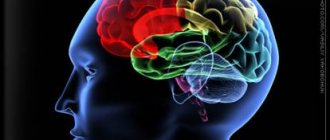Asthenia is a symptom of the underlying disease, but there is also a syndrome. There are several types depending on your cause, but in almost all cases the symptoms can be resolved if proper treatment is given.
A person who has asthenia may experience the following symptoms:
- lack of energy;
- fatigue;
- physical exhaustion;
- mental exhaustion;
- muscle weakness;
- impaired concentration;
- decreased vitality;
- sleep disorders.
Main causes of asthenia
The main causes of asthenia may be excessive care for loved ones, excessive attention to children and problems related, including work. According to statistics, people suffering from asthenia talk about physical and mental fatigue, and women are most susceptible to it.
Causes of asthenia
If you feel these symptoms, it is very likely that you have asthenia.
But what causes this tired feeling in your body? There are many possible causes that can be classified as functional or organic. Asthenia of organic origin.
This is a feeling of fatigue caused by other underlying diseases. In general, it appears at the end of the day and does not change for some time, there is always fatigue there.
Possible reasons may include:
- infections;
- anemia (decreased hemoglobin concentration in the blood);
- hypothyroidism (poor functioning of the thyroid gland);
- medications (benzodiazepines, antiallergic drugs, medications to lower blood pressure);
- pregnancy;
- neurological diseases such as multiple sclerosis;
- cardiovascular diseases;
- cancer;
- apnea syndrome;
- lupus;
- Addison's disease.
Asthenia of functional origin.
This may be due to excessive work, intense intellectual activity, insufficient rest, few hours of sleep, unhealthy habits (smoking, alcoholism, use of stimulants, etc.), studying for exams, competitive sports or any situation that causes intense and constant stress. In these cases, the recommended treatment in general is reducing work and increasing rest hours, eliminating harmful stimuli, defragmenting situations, and maintaining a healthy lifestyle.
In general, asthenia of functional origin appears in the early hours of the day and changes over time. This means that maybe after a few days you will feel good, and then on other days you will feel exhausted again, and so the cycle repeats. On the other hand, in some cases, asthenia of functional origin appears before the seasonal climate. In these cases, this is not relevant, since the fatigue is moderate and lasts a short time.
Other causes of asthenia.
Asthenia can also occur due to mental illnesses such as depression. If this is your case, then treatment with antidepressants or other psychotropic drugs may help eliminate asthenia.
Psychological therapy is also a good option for combating fatigue.
Back Next
Asthenic syndrome, asthenia (from the Greek a - absence, sthenos - strength) is a pathological condition characterized by quickly onset fatigue after activity of normal intensity.
Develops with:
1. All moderate and severe diseases and infections . It is the most common syndrome in medicine (!), an indispensable component of many diseases. For example, with influenza or ARVI, increased fatigue is present: a) in the prodromal period (weakness, weakness, fatigue are the main components of this period); b) at the height of fever (weakness up to maximum severity - “asthenic prostration”); c) during the period of convalescence (increased fatigue is again the leading characteristic of the condition).
2. Chronic fatigue (physical and/or mental). Overwork may be due to objective reasons (for example, illness of a child, difficult material and living conditions, including among migrants and internally displaced persons, etc.), but in the modern world it more often has a “psychogenic” nature (previously such cases were considered as one of the types of neuroses is neurasthenia). In these cases, overexertion is caused by the peculiarities of a person’s subjective assessment of his situation, when he makes excessive demands on himself, plans more things for himself than he can actually accomplish, wants more for himself than he can achieve, thereby driving himself into a state of chronic overwork ( Currently, this type of formation of overwork is attributed not to mental disorders, but to psychological, non-medical problems).
Asthenia should be distinguished from fatigue as a physiological (normal) state:
| Fatigue | Asthenia |
| Physiological (normal) state | Pathological (painful) condition |
| Occurs after significant stress: physical work of high or unusual intensity (for example, loading heavy objects associated with moving, unusual sports activities, tourism, etc.); significant mental stress (for example, preparing for an exam, which does not take the student the entire semester, but only the last few days before the exam, etc.) | Chronic condition. Fatigue worsens after the daily activity that a person performs day after day |
| Characterized by a temporary decrease in body activity after stress | Characterized by a steady decrease in body activity as a result of chronic overexertion and/or exhaustion due to somatic illness |
| Completely disappears after normal rest (night sleep, weekend rest, etc.) | Does not go away after normal rest |
| Does not require special treatment | Often requires special treatment, since by its nature it is a chronic and difficult to reversible condition |
Clinical manifestations:
1. Increased fatigue
Physical - weakness (including in muscles, limbs), fatigue, desire to rest, interrupt work, reduced productivity.
Mental – primarily difficulties with maintaining attention. Because of this, complaints about deterioration of intelligence and memory, errors due to inattention, unfinished tasks, ineffectively spent time (work takes much more time than required in normal conditions).
For example, a student, preparing for a test or exam, reads a chapter of a textbook, but is unable to maintain attention on the material being studied, highlight and remember the most important points, is distracted by extraneous thoughts, as a result, after reading the chapter, an impression is created (often justified) that he did not understand or remember anything. In such cases, some students, hoping for the “25th frame effect” or the consolidation of memory traces in a dream, go to bed, others (more responsible) begin to reread the material again, but since fatigue only accumulates, the effectiveness of rereading is again low.
Since one of the most “resource-intensive processes” when studying educational materials is highlighting key points from the textbook text (often very lengthy), in this textbook the authors will try to help students and do part of the work for them, putting the most important points on the slides (images) at the beginning each of the subchapters.
2. Hyperesthesia, pickiness, grumpiness, irritability, mood swings for minor reasons (emotional lability)
We can simply say that people in this state do not have enough strength to “restrain themselves” (control themselves), to keep their dissatisfaction with something or irritation to themselves.
We can observe typical situations in public transport or in queues, when a foot that has been stepped on, a small accidental push or other inconvenience causes a violent reaction of irritability, including verbal abuse or even assault. Of course, in such situations one cannot ignore both personal characteristics and the factor of a person’s general culture, his upbringing, as well as the cultural norms of society as a whole. Unfortunately, in Russia such reactions in public places are quite common, and this is an additional factor inciting our compatriots not to restrain themselves. In many European countries, in most cases, the person whose foot you stepped on will be the first to apologize to you for being in the way. Of course, this difference cannot be attributed only to the difference in the cultural level of our societies; it can also be justified by the greater general asthenia of our entire society due to worse living conditions. In addition, we must not forget about the chain reaction effect, when we “infect” each other with similar negative emotions in everyday situations.
Quite often, emotional reactions of irritability are observed in medical institutions, not only in patients whose asthenia can be explained by a somatic disease, but also, unfortunately, in medical personnel who have asthenia, which is one of the pathogenetic links in the development of emotional burnout , probably during In many ways, it can be caused by overwork due to improper organization of work (excessive loads in order to earn an acceptable salary, part-time work, performing tasks unusual for the position, night shifts, etc.). The task of the managers of medical institutions of competent labor organization is to try to prevent the development of asthenia in their employees.
3. Sleep disorders. Sleep disorders with asthenia are present not only during the night, but essentially throughout the entire day.
- Evening: difficulty falling asleep. The phenomena of hyperesthesia are characteristic, when attention is attracted by the slightest inconvenience, noise from neighbors, the pounding of one’s own heart, an uncomfortable bed, etc. Sometimes an abundance of thoughts prevents one from falling asleep (they are usually emotionally neutral in content; anxious, exciting thoughts in the same way prevent one from falling asleep during anxious states).
- Night: shallow, restless sleep, frequent awakenings, nightmares.
- Morning: difficulty waking up, lack of feeling of rest after sleep. Often, it is at the moment the alarm clock rings that drowsiness sets in (finally!); after getting out of bed, a feeling of tiredness and tiredness is already expressed (in the morning, even before starting any activity!).
- Day: daytime drowsiness, difficulty concentrating, additional efforts are required to overcome drowsiness and concentrate on work (this wastes additional energy and closes the vicious circle of asthenia - see below). In the second half of the day he becomes more active, collected, efficient, but because of this he cannot fall asleep or delays going to bed later than the required time.
Not all people with asthenia complain of difficulty falling asleep; often they do not suffer because they lie down and cannot fall asleep, but because of their condition (lack of inhibition processes; see below the “vicious circle” of asthenia) they postpone sleep sleeping later than the required time (distracted by minor things that could be done at another time, for example, watching TV, communicating on social networks, etc.). A sign in this case will be a general reduction in sleep duration (for example, a student regularly goes to bed at 1–2 a.m. when he has to get up at 7 a.m.).
4. Various autonomic disorders:
- Headache. One of the most common complaints. There are two main types of headaches: migraine (unilateral, usually affecting the temporal region, orbit, forehead; pulsating, intense, complicating functioning, accompanied by severe hyperesthesia. For more details, see the neurology cycle) and tension headache (pressing, squeezing like a “helmet” or “tight hoop”, bilateral, usually extends from the back of the head, associated with tension in the muscles of the scalp and neck). It is the second type of pain that is one of the most common autonomic disorders with fatigue and asthenia, while with migraine the symptoms of asthenia are also quite pronounced, but they appear secondary to the migraine itself.
- Hyperhidrosis, sweating, hot flashes or, conversely, chilliness, including in the extremities.
- Heartbeats. Due to a violation of the tone of the autonomic nervous system, heart rhythm disturbances, including an increase in the number of extrasystoles, are quite real with asthenia (complaints about them cannot be reduced to autonomic hyperesthesia). It is necessary to take into account that substances with a stimulating effect (coffee, energy drinks, etc.), which many people use to overcome lack of attention and daytime sleepiness due to asthenia, may therefore pose an additional health hazard by potentiating existing rhythm disturbances.
- Dizziness.
- Dyspeptic disorders.
When vegetative disorders occur without significant somatic causes in our country, internists often diagnose “vegetative-vascular dystonia”, while the psychological causes of these conditions are often completely ignored (and in addition to asthenia, similar symptoms can occur with masked depression, panic attacks and other mental disorders ), and therefore patients do not receive adequate therapy.
Processes of excitation and inhibition in the nervous system and the “vicious circle” of asthenia
Outstanding Russian physiologists of the late XIX - early XX centuries. I.M. Sechenov and I.P. Pavlov studied the processes of inhibition and excitation in the nervous system; later, I.P. Pavlov’s teaching regarding the pathogenesis of asthenia was developed by A.G. Ivanov-Smolensky.
Inhibition processes are “higher” in relation to excitation processes, they limit excessive excitation, “keep it within limits”, while in ontogenesis they themselves are formed later than excitation processes and are more sensitive to external unfavorable factors. For example, we know that it is arbitrarily difficult for a small child to sit quietly in one place for a long time, he wants to run and scream, but gradually, as his nervous system matures, he begins to control his behavior better and better, and already at school most children can calmly withstand 40 - minute lesson. Another example: it is believed that a “well-mannered” person differs from an “ill-mannered” person by greater restraint, calmness and self-control, i.e. his inhibition processes are better developed.
When any external harmful effects act on the brain, the inhibition processes are first disrupted, excitation “comes free”, and only with a further increase in the influence of pathogenic factors does the excitation processes become suppressed. This, as we will see in other sections, is characteristic not only of asthenia, but also, for example, of alcoholic intoxication: alcohol is a sedative in itself, large doses can cause sleep or even coma, but in small doses the effects of alcohol, on the contrary, appear speech and motor stimulation.
In the case of asthenia, a change in the tone of the processes of excitation and inhibition forms a “pathological vicious circle”: chronic fatigue leads to exhaustion of the inhibition processes, the released excitation does not allow a person to rest, strength is depleted even more, overwork intensifies, and the vicious circle closes.
Manifestations of such a circle at the level of the circadian rhythm: people in a state of asthenia at the end of the working day become more active and active than in the morning (inhibition processes are exhausted). In the evening, they take on new things, do one thing or another, because of this they either go to bed later than the required time (since they “were busy”), or cannot fall asleep. At night, shallow restless sleep does not allow rest (again due to the exhaustion of inhibition processes), but in the morning drowsiness occurs (“protective” inhibition according to I.P. Pavlov). During the day, drowsiness persists and additional efforts are required to overcome it. At the end of the working day, the inhibition processes are exhausted again, and the vicious circle repeats from the beginning.
Stages or severity of asthenia:
The clinical picture of asthenic syndrome is changeable, dynamic, and is largely determined by the current balance of inhibition and excitation processes, which gives rise to a variety of clinical manifestations. From a clinical and neurophysiological point of view, there are three degrees of severity (or stages of development) of asthenia:
1. Asthenia with hypersthenia - characterized by severe hyperesthesia, increased irritability, distractibility of attention and the resulting decrease in performance and productivity. Complaints of weakness and lack of strength may be absent.
2. Stage of “irritable weakness” - hyperesthesia persists, short bursts of irritability are characteristic, which are quickly exhausted and often end in tears (“tears of impotence”). Attention and performance are more severely reduced; they begin work actively, but quickly get tired.
3. Hyposthenic asthenia (stage of “pure asthenia”) - characterized by “complete loss of strength”, adynamia, exhaustion of all mental processes.
Asthenia or depression?
Complaints of increased fatigue
, weakness and lack of strength are often present not only with asthenia, but also with
depression
.
Moreover, they are one of the diagnostic criteria for depression
. Asthenia and depression are really difficult to distinguish, so sometimes in clinical practice doctors make a preliminary diagnosis - “astheno-depressive syndrome.” However, the etiology and pathogenesis of these conditions are different and in order to prescribe more effective treatment, one should strive to differentiate them. With depression, complaints of increased fatigue and lack of strength arise as a subjective assessment by the patient of the psychomotor inhibition that occurs (this is a component of the depressive triad). With asthenia, such complaints are the result of exhaustion as a result of chronic overexertion and/or exhaustion due to somatic illness.
In this regard, modern diagnostic recommendations postulate that when identifying asthenia, it is necessary to exclude somatic causes, depression, anxiety disorders ( anxiety
causes general stress in a person, leading over time to chronic fatigue) and other mental disorders.
Asthenia in somatic diseases
As mentioned above, asthenia can occur in almost all somatic diseases.
Separately, sometimes previously the so-called cerebrasthenia was identified - asthenia that occurs in organic diseases of the brain, including residual organic pathology. It is one of the clinical variants of psychoorganic syndrome. In addition to the clinical picture of asthenic syndrome, in these cases neurological symptoms characteristic of the underlying disease and manifestations of psychoorganic syndrome are observed.
Asthenia within neurasthenia
Previously, the so-called asthenic neurosis (neurasthenia). It was believed that symptoms of neurasthenia arise due to the fact that, in conditions of weakened inhibition processes, a person is not able to correctly assess his capabilities and plans for himself more things than he can actually do (intrapersonal conflict between desires and available opportunities “I want, but I can not"). In recent decades, the diagnosis of neurasthenia has lost its former popularity in medicine (and was even excluded from the International Classification of Diseases, 11th revision in 2021), because our century can well be called the century of neurasthenia - the “consumer society” imposes more and more new desires with advertising, contributes to the formation of inflated demands on oneself. Those. This is a psychological problem rather than a medical one.
Popular concepts with the help of which they try to explain cases of asthenic conditions due to one or another biological reasons are:
· “Chronic fatigue syndrome” - the term gained popularity in the mid-1980s, when the Epstein-Barr virus or antibodies to it and other herpes viruses began to be detected in the blood of patients with asthenic complaints. Some epidemics of these conditions have been described, but the cause-and-effect relationship between viral infection and symptoms has not been fully proven.
· Fibromyalgia - for this condition, chronic diffuse symmetrical musculoskeletal pain (neuropathic pain/senestopathies or increased pain sensitivity, i.e. hyperesthesia), increased fatigue (including in the first half of the day), sleep disturbances, emotional and autonomic disorders. Inflammatory, rheumatic, endocrine and other causes of this condition have been suggested, but they have not been proven.
Both of these diagnoses are in many aspects controversial nosological entities; they are not recognized by all specialists; their exact etiopathogenetic mechanisms have not been determined; in most cases, in addition to the biological aspects, a significant role is also played by the psychological characteristics of the patients.
The course of asthenic syndrome and approaches to its treatment
If asthenia is caused by any somatic condition (somatogenic asthenia), then the course of the asthenic syndrome will be completely determined by the dynamics of the underlying disease; if the somatic condition worsens, the asthenia will deepen; if the asthenia improves, the manifestations of asthenia will decrease. The basis of therapy in these cases is treatment of the underlying disease.
If asthenia is caused by overwork, which has objective causes, then to improve the condition it is necessary to exclude the effects of unfavorable factors and to have adequate rest of sufficient duration, preferably with a change of environment, sanatorium treatment, physiotherapy, massage, etc.
If asthenia develops within the framework of asthenic neurosis (neurasthenia), then usually even a long rest does not provide tangible benefits, since, having returned to a familiar environment, the persisting intrapersonal conflict (inflated demands on oneself) again forces the person to begin his previous lifestyle with loads exceeding its capabilities (typical situations are when, already a few days after a vacation or vacation, such a person, distracted by unimportant matters, begins to go to bed much later than the required time, does not get enough sleep, and very soon all the symptoms of asthenic syndrome return to their previous level). In these cases, psychotherapy will be useful (including drawing up a hierarchy of life priorities, learning to separate important matters from unimportant ones, etc.), training in “time management,” training in “increasing personal effectiveness,” etc.
In all cases of asthenia, sedatives and sedatives can be used symptomatically (in order to break the “vicious circle” of asthenia). In the mildest cases - herbal remedies (valerian, motherwort, peony, etc.), in more severe and chronic conditions - antidepressants. Tranquilizers and drugs containing barbiturates are not indicated due to their unfavorable side effect profile. Substances with a stimulating effect (including coffee, “energy” drinks) are contraindicated (!), since they only aggravate the symptoms, depleting the body’s own strength (and do not bring this strength, “energy” from the outside, as advertising claims). The use of psychotropic drugs for somatogenic asthenia is possible only taking into account the balance of risks and benefits from their use.
Back Next
To see comments you must register
How is asthenia diagnosed?
Your doctor will definitely ask you a lot of questions about your symptoms. To rule out an organic cause, you will need to do some blood and urine tests. If there are no organic reasons, then, of course, this is functional asthenia. The doctor will try to find out, based on the data you give him, what is the cause of your fatigue, and guide the treatment correctly.
Spring asthenia.
This is a special case of asthenia, which usually appears towards the end of winter or the beginning of spring. Symptoms are usually mild and short-lived, but it should be noted that this is not a psychiatric disorder. It's simply a feeling of tiredness that can be attributed to changes in hormones and neurotransmitters.
When a seasonal change occurs, temperatures and hours of sunlight increase. This causes changes in the functioning of the hypothalamus, the nerve center in the brain responsible for controlling sleep, wakefulness, appetite, thirst and body temperature. Changes in the functioning of the hypothalamus will be responsible for spring asthenia.
Why doesn't this affect all people?
Well, it may simply be due to a factor unique to each individual, a factor that has not yet been identified. Some people may be more sensitive or more likely to notice these climate changes.
This can be a situation similar to allergies: in the spring, many people suffer from asthma or rhinitis due to pollen in the air, while others have no effect on them. How to avoid spring asthenia.
Living a healthy lifestyle and eating a balanced diet are factors that can help you feel better and keep your body and mind energized.
Here are some basic tips to prevent spring asthenia:
- Be sure to include three daily servings of fresh vegetables and two servings of fruit in your diet.
- It is also important to eat moderate amounts of carbohydrates (pasta, rice, legumes, potatoes) and meat. Drink at least two liters of water daily. Have a good rest.
- Most people need seven or eight hours of sleep every day to function properly in their daily activities.
- Leave bad habits. Do not smoke, drink coffee, alcohol or other stimulant drinks late in the day.
- Do moderate exercise. Walking 20 or 30 minutes daily will make you feel more energetic.
- Go to bed and get up at the same time and don't skip meals.
- In some cases, taking vitamins and minerals may be necessary to combat asthenia, but this should always be prescribed by a doctor. However, keep in mind that excess vitamin intake can have very negative consequences.
Neurocirculatory asthenia
Neurocirculatory asthenia or DaCosta syndrome is a condition characterized by shortness of breath, fatigue, rapid pulse, arrhythmia or increased heart rate and chest pain. This is due mainly to exhaustion and emotional stress rather than physical heart disease, and most often has a psychological basis. In psychiatry, there is a tendency to consider neurocirculatory asthenia as a form of anxiety or panic disorder. The syndrome is often associated with hyperventilation and respiratory acidosis. Neurocirculatory asthenia is a classic case for military personnel involved in combat operations and is believed to accompany post-traumatic stress disorder and/or chronic fatigue syndrome.
The specific causes of neurocirculatory asthenia are not precisely known, although stress appears to play a role. Symptoms usually begin in adolescence or early twenties, but may also be present in middle age. The disease tends to be chronic with repeated acute exacerbations. The resulting weakness can lead to withdrawal from social situations, similar to social anxiety disorder, and may be associated with agoraphobia. Symptoms are twice as common in women as in men.
History of: complaints of inability to take a deep breath, choking sensation when inhaling, suffocation, feeling of shortness of breath (shortness of breath), feeling of rapid heartbeat and/or pulse rate more than 100 beats per minute (tachycardia), chest pain or discomfort, excessive fatigue or restriction activity, excessive sweating, insomnia, irritability and nervousness, dizziness, weakness or discomfort in crowds.
Physical examination: Diagnosis of this disorder requires an examination by a psychiatrist or psychotherapist, a determination of mental status, and an examination by a neurologist. Diagnosis is often difficult. On physical examination, rapid breathing of more than 24 breaths per minute may be observed. The pulse may be arrhythmic or accelerated. It is also helpful to take psychological tests such as the Multiphasic Personality Inventory and Interpretations.
Treatment of neurocirculatory asthenia
Treating neurocirculatory asthenia is challenging because many people become preoccupied with their symptoms and tend to seek help from somatic specialists rather than psychiatrists or psychotherapists. Psychotherapy may be the only thing helpful in these cases, as recovery requires focusing on the feelings of anxiety and exploring ways to reduce anxiety. Drug therapy (beta blockers or anti-anxiety agents) may be used to control anxiety symptoms.
Fatigue may indicate the need for stimulants. Stimulants, however, can worsen anxiety symptoms and should be avoided if possible.
Chronic asthenia syndrome.
Chronic asthenia can be defined as a feeling of fatigue that is constant, has an evolution of more than six months and leads to a significant decrease in efficiency of up to 50%. In such cases, consultation with a doctor is necessary.
Although in many cases an organic or psychological cause for chronic asthenia can be found, in a large percentage of patients a specific cause cannot be determined.
The most common symptoms of chronic asthenia are:
- Feeling very tired.
- Headache.
- Sleep disorders.
- Muscle pain.
- In some cases, fever. They look like flu symptoms, only they are long-lasting and are not relieved by bed rest.
When a cause cannot be determined, doctors believe that symptoms may be caused by changes in the immune system or muscle cell function, but these are actually theories that have not yet been proven.
Most cases of chronic asthenia appear in previously healthy people between the ages of 20 and 50, and more often affect women than men.
What does it mean that chronic asthenia has an irregular evolution?
In about half of patients, symptoms disappear after several months of treatment, while others suffer relapses. In these cases, symptoms come and go, worsening when you experience physical or psychological stress.
Sometimes the feeling of fatigue and weakness is so great that it interferes with daily activities, and this can cause anxiety and depression.
Imagine that for several months you feel extremely tired, your muscles and headaches hurt, and after a long period of rest the symptoms reappear. Anyone will feel depressed in this situation.
What is asthenia?
Asthenia or asthenic syndrome is a medical term for loss of physical strength or lack of energy. Asthenia is often a symptom in itself, indicating a deeper problem. Each patient experiences this condition differently, which makes it difficult to diagnose the underlying problem.
Generally, the term asthenia refers to situations where a person experiences fatigue, sleep disturbance and hyperesthesia or increased sensitivity to various stimuli. This can affect both some parts of the body and the entire body. Symptoms of asthenic syndrome make it difficult to function normally, and the weakness experienced can be classified as true weakness or perceived weakness.
True weakness is characterized by an actual loss of muscle strength and is caused by injury or muscle defect. Perceived weakness is a lack of neuromuscular response when a person has the feeling that they cannot complete a task due to weakness, even though their muscles are functioning normally physiologically.
Asthenia can affect everyone and does not discriminate based on age, race or gender. Symptoms may be short-term, chronic, or intermittent.
Differential diagnosis.
Some diseases can cause chronic asthenia and need to be ruled out before a definitive diagnosis can be made.
Diseases such as hypothyroidism, diabetes, anemia and some mental disorders are some examples of diseases that need to be investigated in a patient when he has chronic asthenia.
People with fibromyalgia, for example, like those with chronic asthenia, may experience muscle pain, extreme fatigue and sleep disturbances. On the other hand, fatigue and muscle pain often appear early in various inherited muscle disorders, as well as in various metabolic, autoimmune and endocrine conditions.
What can cause asthenic syndrome?
Common causes of weakness include:
- Thyroid disease
- Anemia, which can occur from excessive blood loss during menstruation
- Depression
- Flu
- Lack of sleep
- Poorly controlled or undiagnosed diabetes
- Chronic heart failure
- Vitamin B12 deficiency
- Side effects from taking certain medications
- Polymyositis, which is an inflammatory muscle disease
- Chemotherapy
Other causes of asthenia include:
- Cancer
- Stroke
- Heart attack
- Nerve or muscle injuries
- Diseases affecting nerves or muscles
- Overdose of medications or vitamins
- Poisons.
While weakness caused by cancer can appear gradually over a long period of time, weakness caused by a heart attack or stroke often occurs instantly.
In addition to asthenia, other symptoms such as difficulty breathing, irregular heartbeat and pain may occur. If you experience sudden weakness, call an ambulance; do not try to go to the doctor on your own.
Symptoms of asthenia
Speaking about asthenia in simple terms, we can say that it is constant weakness and fatigue. Fatigue is considered the main symptom of asthenia. But do not confuse the symptoms of asthenia with ordinary fatigue. We talk about the disease only in those cases when the feeling of fatigue does not leave a person for quite a long time, this can be several months. And usually there is no reason for such fatigue.
Symptoms of asthenia develop quite sharply and suddenly for a person. Sometimes they appear on the threshold of some disease or infection. The feeling of constant fatigue and overwork that occurs with various diseases is much more pronounced if the patient begins to develop asthenia. With symptoms of asthenia, fatigue sets in very quickly in a person, and it takes much longer than usual to restore strength.
At first glance, the symptoms of asthenia strongly resemble those of the flu. Those. it is also characterized by the following manifestations: an increase in body temperature to 38-40°C, increased sensitivity and enlargement of the cervical lymph nodes, the appearance of pain in the muscles and joints, diarrhea. A sharp decrease in appetite, or its absence at all, is also a symptom of asthenia.
Such symptoms are not typical for all cases of asthenia, but if there are at least five of them, appearing simultaneously and lasting for two weeks or more, it indicates that you should consult a doctor.
Now let's look at those symptoms of asthenia that cannot be attributed to any other disease. We are talking, first of all, about increased sensitivity to sounds and light. From bright sunlight, a person’s eyes immediately begin to hurt, and from very low sounds, pain can appear in the ears. Some patients with anemia may experience increased sensitivity to tactile contact(s).
Asthenia in children
Asthenia in children is not very different in its symptoms from the manifestations of this disease in adults. There are only some age differences. Let's look at the methods and methods of treating asthenia in children.
The most important thing in treating asthenia in children is to provide them with regular exercise. Because due to constant fatigue, the child will lose any desire to participate in any sports activities or outdoor games with his peers. And the most important thing here is a strict balance between physical activity and rest. Physical exercise in children suffering from asthenia should be daily and regular.
Another important and significant part of the treatment of asthenia in children is a healthy and nutritious diet. Following a special diet rich in protein and vitamins will be a good basis for getting rid of this disease. The fact is that by including vegetables, fruits, lean meat, and fish in your child’s diet, you will help his body begin to produce energy, which is practically absent with asthenia.
Primary appointment with a neurologist: 1850 RUR.
Sign up Online 5% discount when registering from the site
Treatment of asthenia
Treatment of asthenia can be carried out in different ways, but all of them are aimed at relieving the symptoms of the disease.
Having diagnosed asthenia, doctors usually prescribe the patient drug therapy, consisting of antidepressants. This is due to the fact that in most cases, people with symptoms of asthenia often also have signs of depression. Therefore, until depression is eliminated, it is simply impossible to talk about successful and effective treatment of asthenia. In some cases, taking small doses of antidepressants helps improve sleep and relieve pain. Sometimes doctors prescribe sleeping pills for these purposes.
For the most effective and efficient treatment of asthenia, a method called the “dual approach” is used. It combines a course of psychological counseling with a special program of therapeutic and physical exercises. The development of an exercise program is carried out by a physiotherapist, whose tasks include selecting individual physical activity for each patient individually. Psychological consultation is aimed at identifying external and internal factors that have an adverse effect on the patient, and teaching the person how to control them.
What to do if asthenia occurs?
First of all, it is necessary to exclude all external stimuli. In most cases, this is the most effective method of eliminating asthenic manifestations
.
If asthenia is a manifestation of a pathological process in the body, then additional consultation with a doctor will be required to detect abnormalities in the body, conduct diagnostics, obtain reliable data on the state of health and prescribe the necessary treatment.
asthenic syndrome signs










